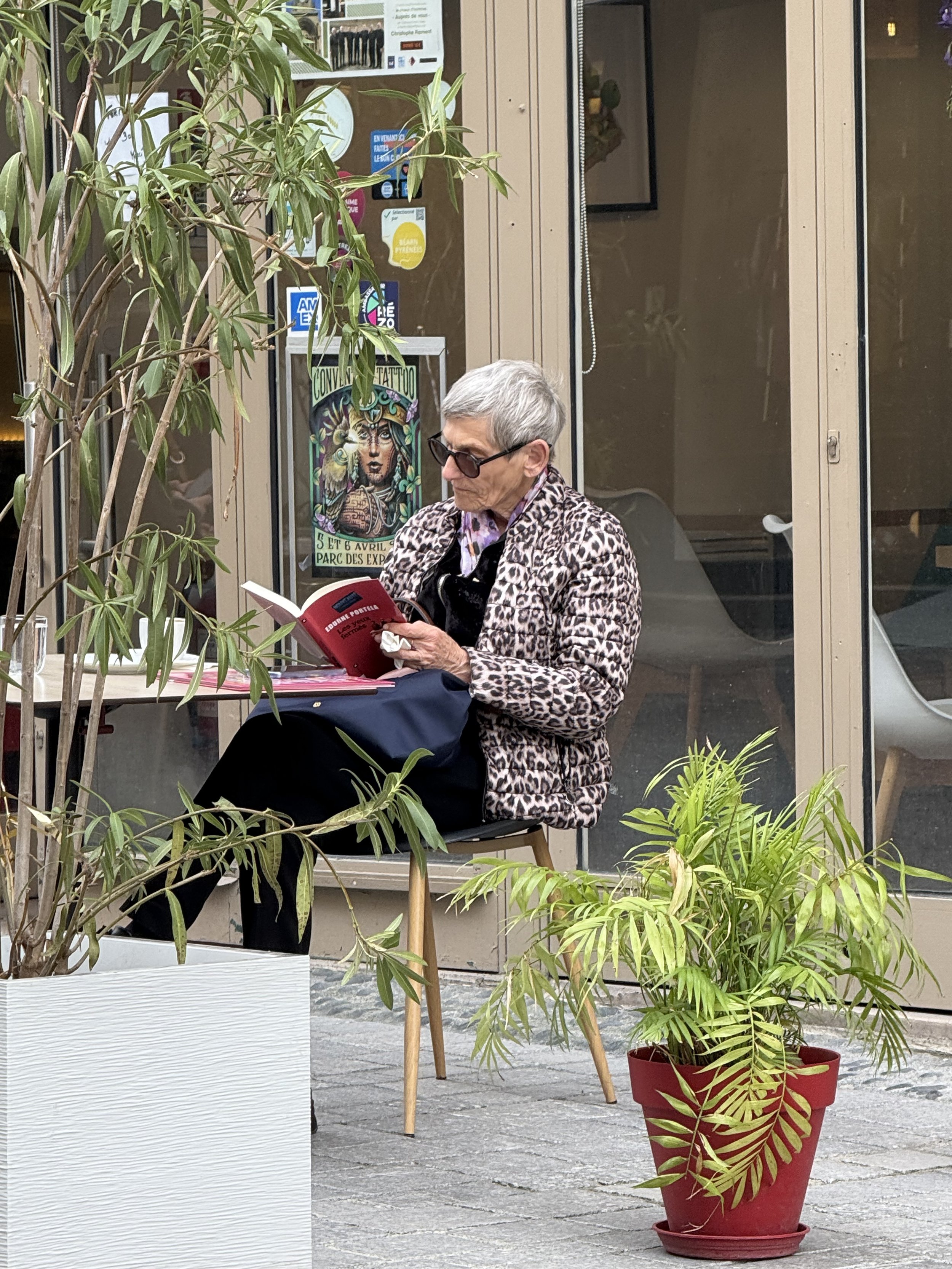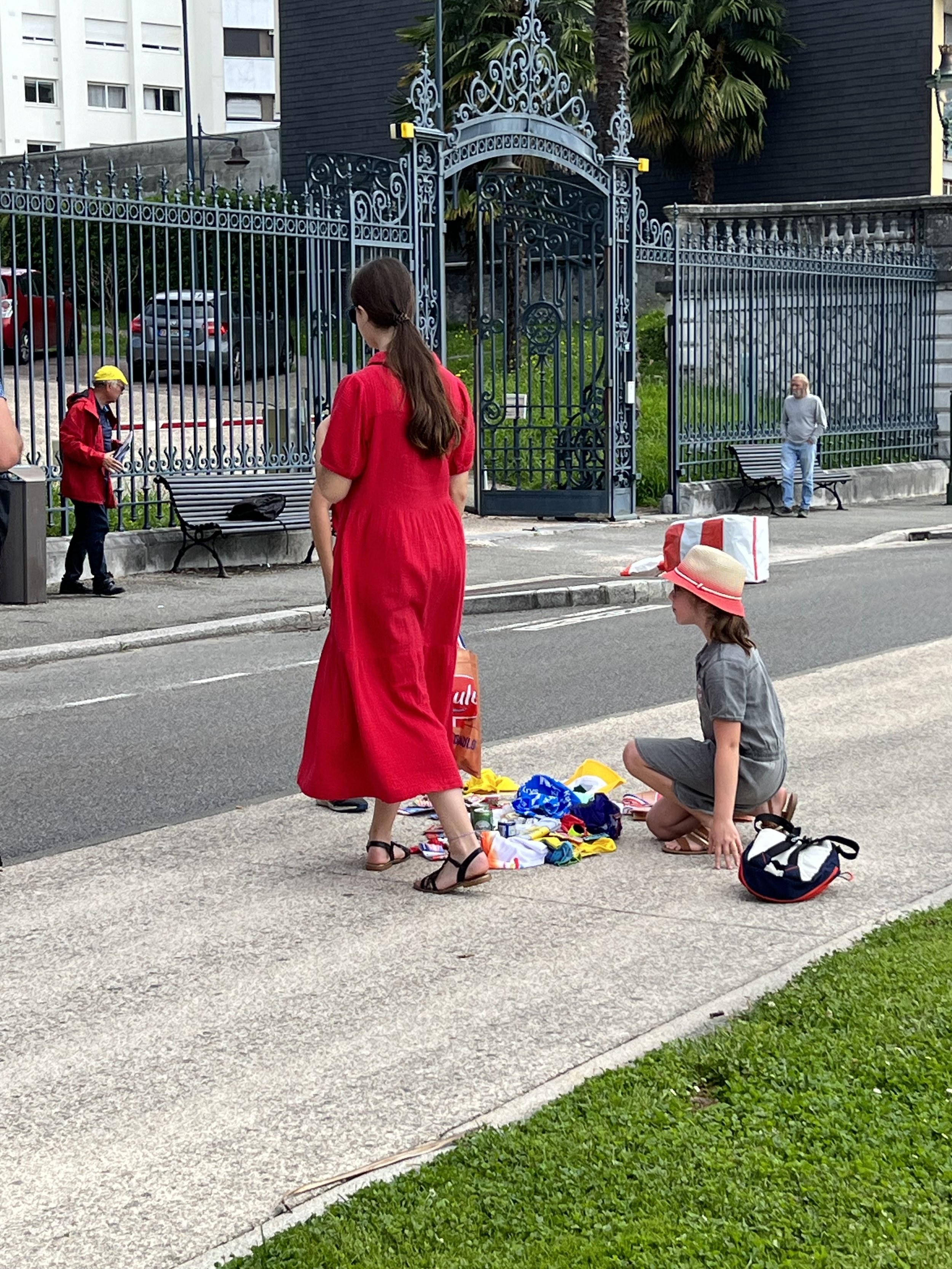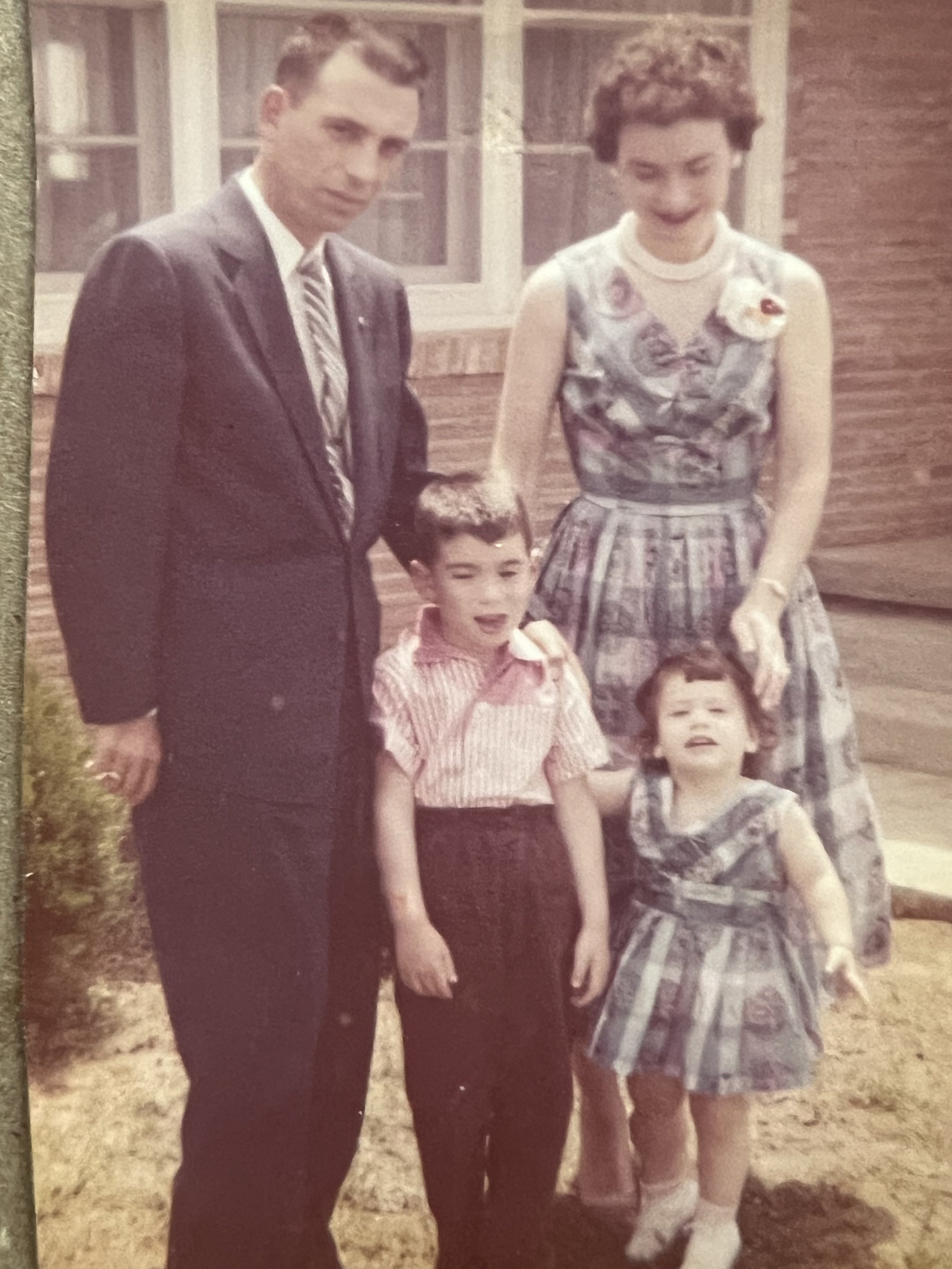À La Mode
Mom and Me 1958
My Favorite Way to Eat Apple Pie…
It is impossible to live in France, the birthplace of “haute couture,” and not consider its 154-billion-euro fashion industry. Early on in my now 1,200+ day Duolingo streak, I learned that the expression “à la mode” means “fashionable” or “trendy” and does not refer to my favorite way to eat apple pie. “Mode” is simply the word for fashion, and it is richly cultivated here. The iconic brands that adorn Paris runways and avenues may set the standard, but are not necessarily what defines it within the culture. The national fascination with fashion runs deeper and is far more personal.
Ensembles and Bell-bottoms…
My own love of couture and the joy of creating an ensemble is maternally inherited. Born in 1927, my mother grew up during the Great Depression when fashion was an unaffordable frivolity. Because my grandmother didn’t want her daughter to see the world or herself through an impoverished lens, she fashioned my mother’s wardrobe from Goodwill cast offs. Long before “thrifting” became a buzz word, she transformed deconstructed adult garments into an enviable collection for a budding beauty. The clothes did not “make the woman” but they did give her confidence and the belief that it was alright to stand out, even in a struggling coal mining town.
When I came along in the more hopeful 1950’s, my mother carried forward the principle with zeal. She transformed trendy but affordable yards of cheerful gingham, madras, and seersucker into stylish coordinating outfits for us as well as my beloved, brown-eyed (like me) doll Lisa. Sunglasses often added a certain “je ne sais quoi.”
Dad and brother Tony with Mom and me in our matching dresses.
By the time I was a teen, bell bottom jeans were in-vogue. Unfortunately, the alterations required to accommodate my less than leggy inseam left no bell on the bottoms. Blossoming sewing skills and baby-sitting profits were forthwith devoted to creating a closet full of bespoke petite garments. As I entered high school in 1970, the mini skirt was all the rage and its length had risen from just above the knee to mid-thigh since its introduction in the 1960’s. This was not a problem for runway models, or even the average to tall classmate. But for me, the much coveted look presented an even greater dilemma than bell bottoms. I’ll never forget Mom and I dissolving into hysterical laughter when a Vogue skirt pattern suggested a mid-thigh hemline: eight inches above the knee. My legs only offered a scant nine inches between the top of the knee and the curvature of the “derrière,” much too close for her or my comfort!
Though which designer “invented” the iconic mini skirt is still disputed, many fashion critics credit André Courrèges for introducing the “risquè” just above the knee length to haute couture. I recently learned that he was born right here in Pau. His revolutionary designs shown in 1964 and 1965 infulenced the likes of Christian Dior, Coco Chanel, Vidal Sassoon, Balenciaga, and Emanuel Ungaro.
The Courrèges Boot
Courrèges also popularized the infamous pantsuit and created a narrow cut, calf-high, boot that launched the “go-go boot” frenzy . Both trends had their day in my closet.
Qualité Contre Quantité…
I now have a few “investment pieces” and must admit to spending my share of screen time watching YouTubers capture what people are wearing on the streets of New York, Paris, London, and Milan. Though I enjoy seeing the latest global trends, living in the French culture reveals some fundamental differences between European and American fashion perspectives. I’ve learned that my inherited fashion philosophy is more in line with this side of the Atlantic.
Cultural and political history certainly play a role in these differences. For example, unlike the United States, whose geographical expansionism propagated a culture of “bigger is better,” compact France cherishes quality over quantity in all things. As a result, wardrobes tend to be smaller and more enduring. My fabulously fashionable hairstylist’s closet has just one short hanging rail and several shelves of garments. At 29 he already has pieces that have hung there for a decade and yet he always looks urbane and in vogue.
Fraternitè…
The national principle of “fraternitè” is also evident in the French sense of style. Born out of the French Revolution, it places the interests of society as a whole over individual freedoms. The idea encourages a sense of cultural appropriateness in behavior which in turn influences fashion. I can only imagine the shock and horror that would face the misguided individual arriving at a French funeral or wake in shorts and sneakers, as I have witnessed in the United States.
The sense of fashion appropriateness proved evident the first time we visited Le Roy Merlin, our local home improvement store. Back in Boston, a run to Home Depot or Lowes might well be made in tired workout gear or even pajama bottoms (mon dieu!). Not so at its French counterpart. Such attire, even if bearing the pricey Lulu Lemon label, would draw inquisitive looks suggesting you must be lost on your way to the “salon du sport.”
While exploring Le Roy Merlin’s stylish closet organizers, I wandered into a remarkable aisle I had never seen before in a home improvement store. It was filled with smart looking garments and footwear designed to suit various trades. All were fit for purpose, but also fit to flatter and look professional. So, it’s no surprise that French construction workers sometimes look more stylish than the average khaki clad male dining at the Olive Garden.








Photos: (1&2) The ubiquitous scarf extends cafè season to nearly year round. (3 & 4) Just another early evening stroll on the Boulevard des Pyrénées. (5) Winner of best fishing accessory category. (6&7) Berets were “de rigueur” at the fall grape harvest. (8) Casual elegance waiting for the Tour de France to arrive.
Individualitè
However, I must take a moment to defend (while simultaneously cringing) the American commitment to personal freedom as it relates to fashion. In any culture, clothing often represents what “tribe” we belong to: with which sport team, political perspective, or religion we identify. While wearing such “team” monikers make us feel a certain cozy inclusion, they can also exclude others, especially in the case of religious symbols.
To some degree, this was the French argument for secularizing the public school system in the late 19th century. But laws intended to eliminate “religious propaganda” in public schools ( like crosses, yamakas, and hijabs) has created serious conflict since its inception and is viewed by some as discriminatory. Although the United States does not have any laws (yet…) that prohibit specific clothing in the public arena, we also struggle with balancing individual and national interests.
Inclusivité et Intentionnalité…
On a more positive note, the French sense of style is not dominated by gender or age. Men and women freely wear body conscious clothing. Some styles and accessories that might be considered “effeminate” by American standards, do not make a statement regarding one’s sexuality here. Also, much to my delight, mature women are still considered valuable, vibrant, and dare I say, sexy. Lingerie shops are frequented by the women of Gen Z as well as Baby Boomers. Actresses like Catherine Deneuve (muse to fashion designer Yves Saint Laurent) and Philippine Leroy-Beaulieu (mature siren of the Netflix series “Emily in Paris”) are fashion icons for women of all ages.
In France, haute couture isn’t reserved for socialites and entertainers. Even politicians have style. Currently at the helm of the country, President Emmanuel Macron gets my vote for “the most fashionable world leader,” from his elongated sideburns to the tips of his JM Weston shoes (a French brand since 1891, despite the Anglo-Saxon name). The impeccable “Première dame de France,” Brigitte Macron is twenty-three years senior to her husband (ooh la la!). She consistently exudes classic style with a contemporary edge thanks to French fashion houses like Louis Vuitton, Balmain, and Dior. The last American equivalent was Jaqueline Bouvier Kennedy, who infamously charmed the French people with her language skills and style on a presidential visit in 1961.
One could argue that both sexes here are “marque” (brand) conscious, but at least on the streets outside of Paris, there is empirical evidence that the global trend toward “quiet luxury” dominates over bold logos. I sense that purchases are influenced more by an informed appreciation for a designer’s style and quality than the prestige of wearing the label.
But above all, there is a certain “intentionality” to French style that fascinates me. Even the most casual outfit can reveal cerebral effort. A petit pause for café might proffer a septuagenarian’s youthful orange sneakers jauntily paired with slim gray trousers or a shop keeper’s otherwise plain scarf twisted into an unusual knot. Simple gestures speak to an inherent sensibility joined with a desire for individuality, even if exercised unconsciously.
Cozy Comfort…
Yet despite my own fashion heritage and passion for textiles in general, I secretly love lazy attire. As much as I appreciated the well-cut suits of my corporate life and the creative combinations of my entrepreneurial years, I always looked forward to cozy comfort-clothes at the end of the workday. Now retired, without the influence of career on my fashion choices, there is a new pressure as a cultural transplant to not stick out like a sore thumb. It can be tiresome at times. Just popping out to procure a breakfast baguette warrants a quick wardrobe change from lounge wear to jeans or at least the addition of a chic coat for camouflage. But I must admit, the effort of living in this fashion conscious universe is worth the surprise of an occasional zesty orange sneaker.
If you would like to ask us about this post or share a similar experience, click below.



